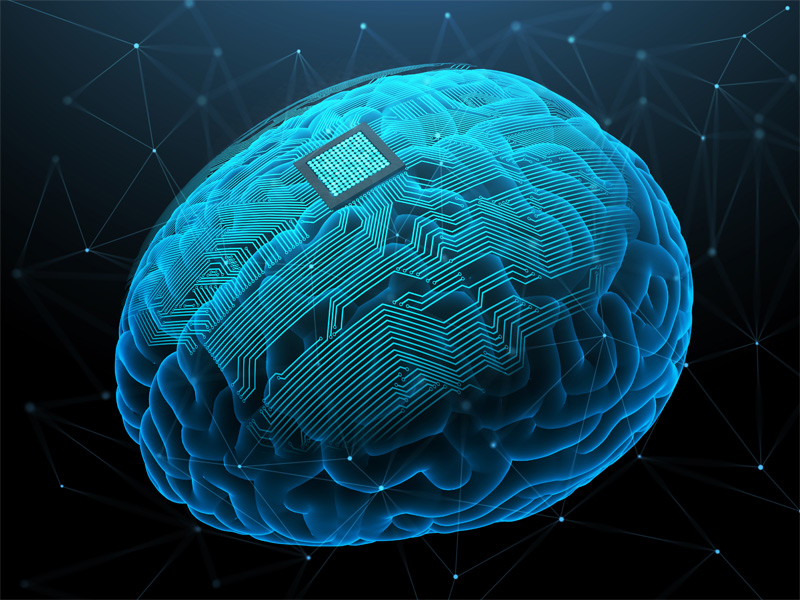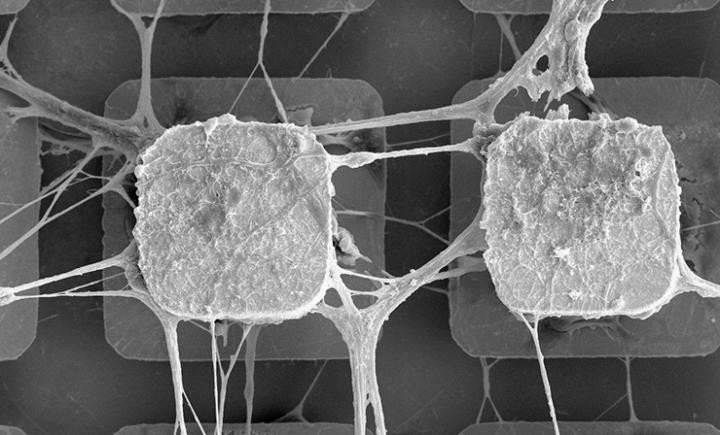
3rd February 2021 Brain stem cells could improve AI Scientists have begun working on a project that will see human brain stem cells used to power artificial intelligence and could bring about a revolution in computing.
The Neu-ChiP project is an international science collaboration led by researchers from Aston University, UK. It has just been awarded £3.06m ($4.17m) to show how neurons – the brain's information processors – can be harnessed to supercharge computers' ability to learn. At the same time, it aims to dramatically cut energy use. The research team is now embarking on a three-year study to demonstrate how stem cells grown on a microchip can be taught to solve problems from data, laying the foundations for a "paradigm shift" in machine learning. The use of AI is becoming ever more prevalent, in areas that include healthcare, finance, autonomous vehicles and speech recognition, and even the recommendation of films through on-demand services like Netflix. Big tech companies – such as Amazon, Apple, Facebook and Google – are investing heavily in machine learning to tailor their products and better understand their customers. However, current electronic approaches to machine learning have limits, requiring ever-growing computing power and energy demands. The recent trend towards "neuromorphic" computing, which aims to mimic neural activity electronically, is hampered by inherent limitations of conventional electronics. By contrast, biological human brain cells effortlessly combine these functions and have extremely low power demands, requiring only a small volume of a nutrient-rich solution to operate. In the Neu-ChiP project, the team will layer networks of stem cells resembling the human cortex onto microchips. They will then stimulate the cells by firing changing patterns of light beams at them. Sophisticated 3D computer modelling will allow the observation of any changes the cells undergo, to see how adaptable they are. This imitates the "plasticity" of the human brain, which can rapidly adapt to new information.
In addition to improving the power and learning capabilities of AI, the project is also expected to produce new knowledge about the functioning of the brain which could then be used to develop novel stem cell-based treatments. Neu-ChiP is funded by the European Commission's Future and Emerging Technologies (FET) programme and involves partner institutions in the UK, France, Israel, Spain, and Switzerland. "Our aim is to harness the unrivalled computing power of the human brain to dramatically increase the ability of computers to help us solve complex problems," said David Saad, Professor of Mathematics at Aston University. "We believe this project has the potential to break through current limitations of processing power and energy consumption to bring about a paradigm shift in machine learning technology." "Our ability to turn human stem cells into brain cells has revolutionised the study of the human brain," said Dr Eric Hill, Senior Lecturer in Stem cell Biology at Aston University. "This exciting interdisciplinary project will bring international scientists from diverse backgrounds together to develop new technologies that will provide huge insight into the development of human neuronal networks." Dr Jordi Soriano and Daniel Tornero – two researchers from the University of Barcelona, both involved in this project – commented as follows: "Our ability to engineer neuronal circuits in a dish and train them to conduct data analysis will provide new insights on how the brain computes information and finds solutions. The developed technology may even help to design unique and exciting human-machine interfaces." Dr Shahar Kvatinsky and Daniel Ramez – two researchers from Technion Israel, both involved in this project – commented as follows: "We are seeking to build neuromorphic circuits and combine emerging electronic devices with biological neurons, and this project is a major step towards this target. In the context of synthetic biology, it is impressive to see computation in living cells evolving from digital to analogue, and moving towards a neuromorphic computing paradigm."
Comments »
If you enjoyed this article, please consider sharing it:
|








